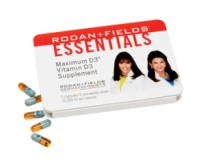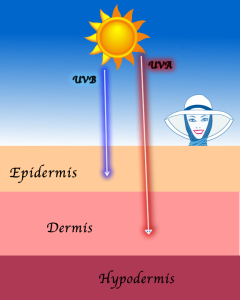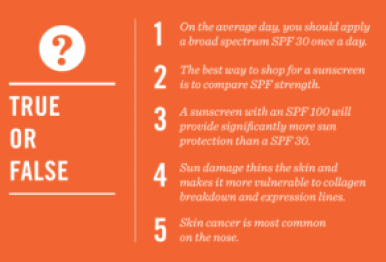by Debi G | Apr 21, 2015
 Sun lovers continue to crowd the beaches every summer, despite widespread awareness of the risk of skin cancer. Now, a recent study published in the journal Cell may partially explain why.
Sun lovers continue to crowd the beaches every summer, despite widespread awareness of the risk of skin cancer. Now, a recent study published in the journal Cell may partially explain why.
According to the researchers, chronic exposure to UV radiation causes endorphins, or the body’s feel-good hormones, to release and set off a reaction like that triggered by certain drugs, leading to physical dependence, tolerance and addiction-like behavior in rodents.
“It’s surprising that we’re genetically programmed to become addicted to something as dangerous as UV radiation, which is probably the most common carcinogen in the world,” says senior study author David Fisher of Massachusetts General Hospital and Harvard Medical School. “We suspect that the explanation involves UV’s contribution to vitamin D synthesis in the skin. However, in the current time, there are much safer and more reliable sources of vitamin D.”
For some time, scientists have observed a link between sunlight and mood, as evidenced by Seasonal Affective Disorder (SAD), a form of depression related to changes in the season.
The connection between light and mood may also partially explain why indoor tanning is still in widespread use. Centers for Disease Control and Prevention researchers reviewed questionnaires from U.S. females ages 18-34 from 2010 and 2011, they found over 25% had used an indoor tanning bed at least once in the last year, while more than 15% had engaged in frequent tanning (10 times or more) over the same period.
 Of course, the risks of UV exposure still far outweigh the benefits due to the incidence of skin cancer and the effects of photoaging.. For best results, avoid prolonged UV exposure, eat vitamin D-enriched foods like salmon, mushrooms, milk and cereal, and try a vitamin D supplement, such as ESSENTIALS Maximum D3 Vitamin D3®, as alternative healthy sources of vitamin D.
Of course, the risks of UV exposure still far outweigh the benefits due to the incidence of skin cancer and the effects of photoaging.. For best results, avoid prolonged UV exposure, eat vitamin D-enriched foods like salmon, mushrooms, milk and cereal, and try a vitamin D supplement, such as ESSENTIALS Maximum D3 Vitamin D3®, as alternative healthy sources of vitamin D.
Source:

by Debi G | Apr 2, 2015
 With spring in the air, you’ll likely be spending more time outdoors in the coming months. While the lure of the sun is tempting, it’s important to practice safe sun care habits every day.
With spring in the air, you’ll likely be spending more time outdoors in the coming months. While the lure of the sun is tempting, it’s important to practice safe sun care habits every day.
According to the Skin Cancer Foundation, more than 5 million Americans are treated for skin cancer every year and it’s the most frequent cancer in women aged 25–29 years. Yet sun care myths still abound.
For example, many people believe they can apply sunscreen in the morning and stay protected all day. Or because they work indoors, they think they’re not exposed to the UV rays.
New research indicates otherwise. We now know that the aging UVA rays can penetrate window glass, a finding with widespread implications for most adults. Consider a recent study in JAMA Dermatology that found airline pilots are exposed to the same amount of UV radiation over the course of an hour as a 20-minute tanning bed session due to the longer UV wavelengths penetrating airplane windshields.
Always take cover from the sun’s damaging UV rays so you can look your best in the years to come.
Take Cover
Take this quiz to see how sun savvy you are and if you’re doing everything you can to protect your skin from the No. 1 ager:

Answer Key:
1. True and False! If you’re going to be spending time outdoors, the FDA recommends reapplying a broad-spectrum sunscreen every two hours or immediately after swimming or if you’re sweating. If you’re simply driving to work and inside most of the day (and not near windows), applying a broad spectrum SPF 30 once a day may suffice.
2. False. SPF only gives half the story, as it only measures how effective a sunscreen is against UVB burning rays. You also want to ensure the formulation is broad spectrum, which protects against the long-wave aging UVA rays as well. Look for ingredients like avobenzone (defends against UVA), zinc (defends against UVA and UVB) and titanium dioxide (defends against UVA and UVB). REDEFINE Triple Defense Treatment’s SHIELDrfP Technology, for example, combines an exclusive complex of stabilized avobenzone, a key absorber of aging UVA rays, with antioxidants that help stabilize the broad-spectrum protection to visibly decelerate the signs of photoaging over time.
3. False. An SPF 30 blocks about 97% of UVB rays, while an SPF 45 offers only small, incremental advantage—about 98% protection against UVB rays. Anything higher offers only negligible protection. It’s more important to reapply, so choose a formula that’s aesthetically pleasing.
4.True. UV rays can destroy cells and alter the DNA in others. Over time, collagen and elastin fibers break down, resulting in wrinkling and sagging. The best defense is sunscreen, but you can minimize the appearance of wrinkles and expression lines with topical ingredients, like retinol, glycolic acid, or, in the case of REDEFINE ACUTE CARE™ Skincare for Expression Lines, hyaluronic acid and peptides.
5.True. However, malignant growths are also commonly found along the hairline, neck, ears and upper torso—places people aren’t as diligent about applying their sunscreen.
Now is the time to take charge of your skin…message me 🙂

 Sun lovers continue to crowd the beaches every summer, despite widespread awareness of the risk of skin cancer. Now, a recent study published in the journal Cell may partially explain why.
Sun lovers continue to crowd the beaches every summer, despite widespread awareness of the risk of skin cancer. Now, a recent study published in the journal Cell may partially explain why. Of course, the risks of UV exposure still far outweigh the benefits due to the incidence of skin cancer and the effects of photoaging.. For best results, avoid prolonged UV exposure, eat vitamin D-enriched foods like salmon, mushrooms, milk and cereal, and try a vitamin D supplement, such as ESSENTIALS Maximum D3 Vitamin D3®, as alternative healthy sources of vitamin D.
Of course, the risks of UV exposure still far outweigh the benefits due to the incidence of skin cancer and the effects of photoaging.. For best results, avoid prolonged UV exposure, eat vitamin D-enriched foods like salmon, mushrooms, milk and cereal, and try a vitamin D supplement, such as ESSENTIALS Maximum D3 Vitamin D3®, as alternative healthy sources of vitamin D.


